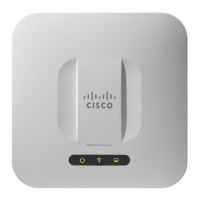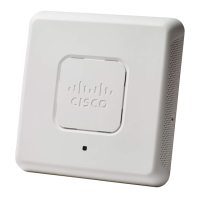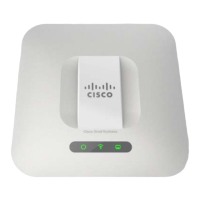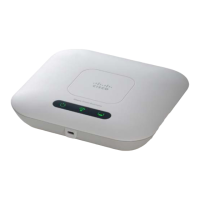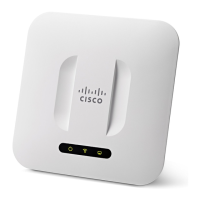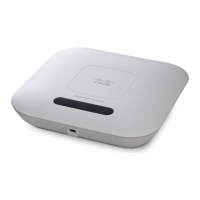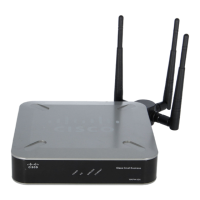The measurement is in beacons. For example, if you set it to 1, the clients check for buffered data on the WAP device
at every beacon. If you set it to 10, the clients check on every 10th beacon.
• Fragmentation Threshold — The frame size threshold in bytes. The valid integer must be even and in the range
of 256 to 2346. The default is 2346.
The fragmentation threshold is a way of limiting the size of packets (frames) transmitted over the network. If a
packet exceeds the fragmentation threshold set, the fragmentation is activated and the packet is sent as multiple
802.11 frames.
If the packet being transmitted is equal to or less than the threshold, the fragmentation is not used. Setting the
threshold to the largest value (2,346 bytes, which is the default) effectively disables the fragmentation.
By default, the fragmentation is off. We recommend not using fragmentation unless you suspect the radio interference.
The additional headers applied to each fragment increase the overhead on the network and can greatly reduce the
throughput.
• RTS Threshold — The Request to Send (RTS) Threshold value. The valid integer range must be from 0 to 65535.
The default is 65535 octets.
The RTS threshold indicates the number of octets in an MPDU, below which an RTS/CTS handshake is not performed.
Changing the RTS threshold can help control the traffic flow through the WAP device. If you specify a low threshold
value, the RTS packets are sent more frequently, which consumes more bandwidth and reduces the throughput of
the packet. However, sending more RTS packets can help the network recover from interference or collisions that
might occur on a busy network, or on a network experiencing electromagnetic interference.
• Max Associated Clients — The maximum number of stations allowed to access the WAP device at any one time.
You can enter an integer between 0 and 200. The default is 200 stations.
• Transmit Power — A percentage value for the transmit power level for the WAP device.
The default value of Full - 100 % can be more cost-efficient than a lower percentage because it gives the WAP
device a maximum broadcast range and reduces the number of access points needed.
To increase the capacity of the network, place the WAP devices closer together and reduce the value of the transmit
power. This setting helps reduce overlap and interference among the access points. A lower transmit power setting
can also keep your network more secure because the weaker wireless signals are less likely to propagate outside of
the physical location of your network.
Some channel ranges and country code combinations have relatively low maximum transmit power. When attempting
to set the transmit power to the lower ranges (for example, Medium - 25 percent or Low -12 percent), the expected
drop in power may not occur, because certain power amplifiers have minimum transmit power requirements.
• Frame-burst Support — Generally enabling Frame-burst support improves the radio performance in the downstream
direction. The default value is set to Off
• Airtime Fairness Mode — The airtime fairness (ATF) feature was implemented to address the issue of slower-data
transfers throttling the higher-speed ones. The default value is set to Off
• Maximum Utilization Threshold—Enter the percentage of network bandwidth utilization allowed on the radio
before the WAP device stops accepting new client associations. The valid integer range is from 0 to 100 percent.
The default is 0 percent. When set to 0, all new associations are allowed regardless of the utilization rate.
• Fixed Multicast Rate — The transmission rate in Mbps for broadcast and multicast packets. This setting can be
useful in an environment where the wireless multicast video streaming occurs, provided the wireless clients are
capable of handling the configured rate.
Cisco WAP581 Wireless-AC/N Dual Radio Access Point with 2.5GbE LAN Administration Guide
48
Wireless
Radio
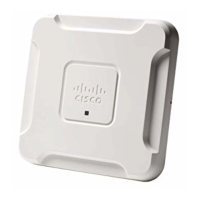
